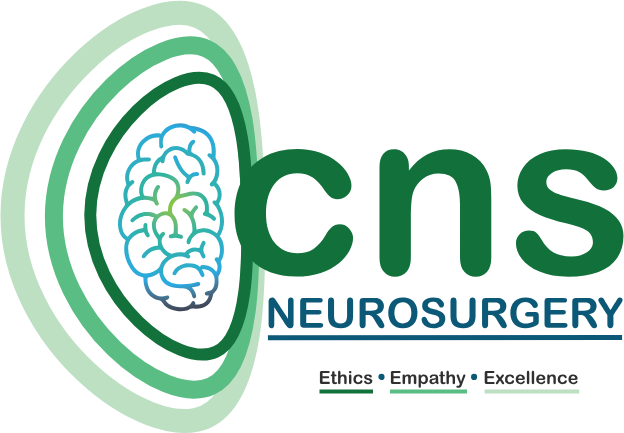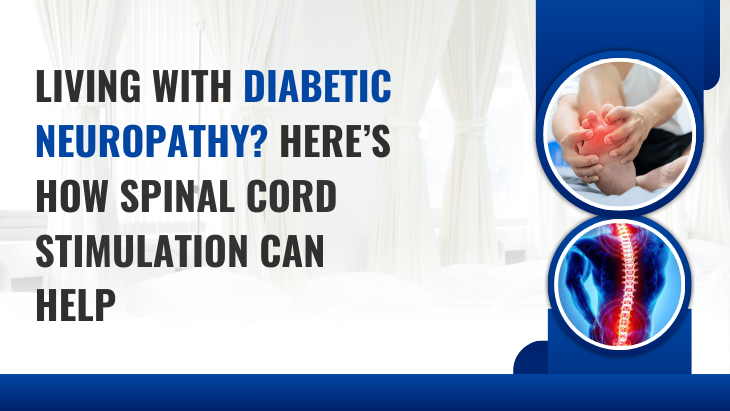Managing diabetic neuropathy can be a daily struggle. Particularly in the feet and legs, the ongoing discomfort, tingling, numbness, or burning sensations can seriously interfere with daily life. Many people still have incapacitating symptoms even if traditional treatments such drugs, lifestyle modifications, and physical therapy might provide some relief. Should you be among them, spinal cord stimulation (SCS) may be the revolutionary treatment you have been waiting for.
In this blog article we’ll discuss what diabetic neuropathy is, why it occurs, and how spinal cord stimulation can provide those who have tried various treatment choices with limited success life-changing relief.
Understanding Diabetic Neuropathy
One kind of nerve damage brought on by extended elevated blood sugar levels is diabetic neuropathy. Affecting more than half of persons with diabetes over their lifetime, it is among the most common consequences of the disease. Mostly affecting peripheral nerves—particularly those in the legs and feet—the disorder can also affect the digestive system, urinary tract, and heart.
Types of Diabetic Neuropathy
- Peripheral neuropathy: The most often occurring type, peripheral neuropathy first affects the feet and legs then occasionally the hands and arms.
- Autonomic neuropathy: Affects internal organs including the bladder and digestive tract in autonomic neuropathy.
- Proximal neuropathy: Affects the hips, thighs, or buttocks, proximal neuropathy can result in leg weakness.
- Focal neuropathy: Often in the head, chest, or legs, focal neuropathy is sudden, acute pain in a certain nerve or group of nerves.
Symptoms of Peripheral Neuropathy:
- Sharp, shooting, or burning pain
- Tingling or numbness
- Muscle weakness
- Extreme sensitivity to touch
- Loss of coordination or balance
Over time, these symptoms could get worse and cause decreased mobility, disturbed sleep, and a notable quality of life loss.
Conventional Treatments: Why They Sometimes Fall Short
Usually, doctors advise combining therapy to control diabetic neuropathy including:
- Control of blood sugar to stop more damage to nerves.
- Pain-relieving medications including antidepressants (duloxetine), anticonvulsants (pregabalin or gabapentin), and topical medicines (capsaicin or lidocaine).
- Physical therapy meant to increase coordination and strength.
- Changing lifestyles include nutrition and exercise.
Although these therapies have benefits, they are not universal. While some patients cannot withstand the negative effects of drugs, others feel very little relief from their discomfort. Under such circumstances, spinal cord stimulation is becoming a viable substitute.
What Is Spinal Cord Stimulation?
By sending modest electrical impulses to the spinal cord, spinal cord stimulation (SCS) is a minimally invasive, implanted device therapy used to help control chronic pain. These impulses lessen the sensation of pain by interfering with the nerve signals that let the brain know when something hurts.
For decades, the treatment has been applied effectively for disorders including complicated regional pain syndromes and failed back surgery syndrome. More lately, it’s been used with encouraging outcomes to treat uncomfortable diabetic peripheral neuropathy (PDN).
How Spinal Cord Stimulation Works
The SCS system consists of:
- Leads (thin wires): Placed in the epidural space close to the spinal cord.
- Pulse generator: Usually in the belly or buttock, a tiny gadget implanted under the skin provides electrical pulses to the leads.
- Remote control lets the user turn the gadget on and off or modify stimulation levels.
The electrical pulses either block or regulate pain signals before they reach the brain, therefore lowering the sensation of pain. Crucially, SCS can greatly enhance symptoms and quality of life but does not heal the underlying nerve injury.
Why SCS Is a Game-Changer for Diabetic Neuropathy
With spinal cord stimulation, several recent clinical trials have found notable and long-lasting alleviation from diabetic neuropathic pain.
Key Benefits Include:
- Substantial pain relief: Many people say their pain has dropped 50% or more.
- Improved sleep and daily functioning: Less discomfort means more movement and better rest, so enhancing everyday functioning and sleep.
- Reduction in medication use: Some individuals are able to cut back on or stop depending on opioids or other painkillers.
- Trial phase available: Before committing to a permanent implant, a temporary SCS device can be placed for a trial period—typically five to seven days—to assess whether the treatment is effective.
Several SCS devices authorised by the FDA especially for painful diabetic neuropathy For patients with PDN, Medtronic’s IntellisTM and VantaTM spinal cord stimulators as well as Nevro’s Senza® device show great clinical results.
What to Expect: The SCS Procedure
- First- Assessment: Should you be a candidate for SCS, your doctor will evaluate you by looking over your medical background, pain level, and past course of treatment. Additionally carried out could be imaging and diagnostic tests.
- Second Phase – Trial: Temporary leads will be inserted close to your spinal cord and attached to an external pulse generator during a brief surgery. You will use the gadget for roughly one week to find if it helps your pain.
- Third step – lifelong implantation: Usually defined as 50% or more pain reduction, a successful trial results in the permanent SCS system being installed under local anaesthetic or moderate sedation.
- Fourth – Adjustment and Follow-Up: Your doctor will change the device settings following implantation to maximise pain management. Regular follow-ups will help to guarantee that the system keeps running as expected.
Who Is an Ideal Candidate?
You might be a candidate for spinal cord stimulation if:
- If your diabetic neuropathy causes persistent, moderate to severe pain—usually more than six months.
- Conservative approaches have proved ineffective.
- Your suffering greatly affects either daily living or sleep.
- There are no active infections or other medical conditions that would complicate the implantation.
- You pass the SCS trial phase having effectively reduced pain.
Realistic expectations are also crucial as SCS can greatly lessen suffering even if it cannot totally remove it.
Risks and Considerations
Like any surgery, spinal cord stimulation involves potential risks:
- Infection
- Bleeding
- Lead migration (leads shifting from their original placement)
- Device malfunction
Still, these hazards are really modest, particularly in cases when the operation is carried out by seasoned experts. For patients with intractable neuropathic pain, the advantages usually exceed the hazards.
Conclusion
Living with diabetic neuropathy can be taxing, particularly in cases when conventional therapies prove inadequate. For those with painful diabetic neuropathy, spinal cord stimulation presents a clinically validated, FDA-approved treatment. SCS can restore normalcy by stopping pain impulses before they get to the brain, therefore lowering pain, enhancing sleep, and allowing a more active existence.
Take the First Step Toward Relief
Living with diabetic neuropathy can be draining, particularly if standard therapies provide no relief. Spinal cord stimulation (SCS) can be the breakthrough you need if you have persistent nerve pain even with drugs and lifestyle adjustments. Although it doesn’t restore nerve damage, this minimally invasive surgery greatly lessens pain signals, enabling patients to recover mobility, enhance sleep, and restore their quality of life. For many, it’s a road towards normalcy, not only a means of pain management.
If you’re ready to explore advanced solutions, consulting a skilled specialist is essential. Dr. Chirag Solanki, recognized as the best neurosurgeon in Ahmedabad, offers expertise in neuromodulation therapies like SCS with a patient-first approach. Don’t let neuropathic pain define your life—Schedule a consultation with Dr. Solanki today and take the first step toward lasting relief.

